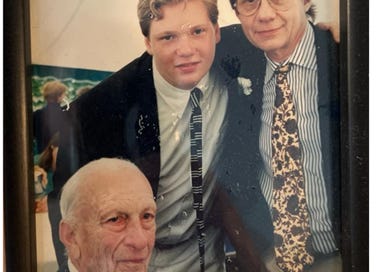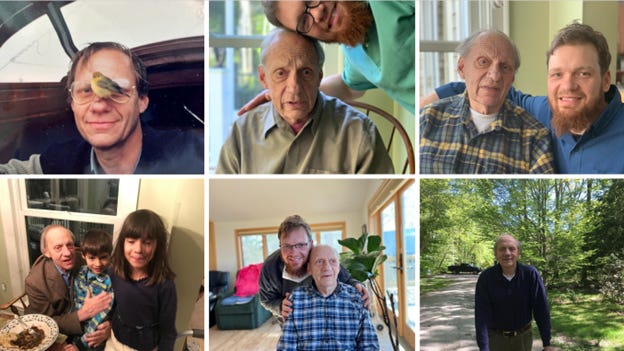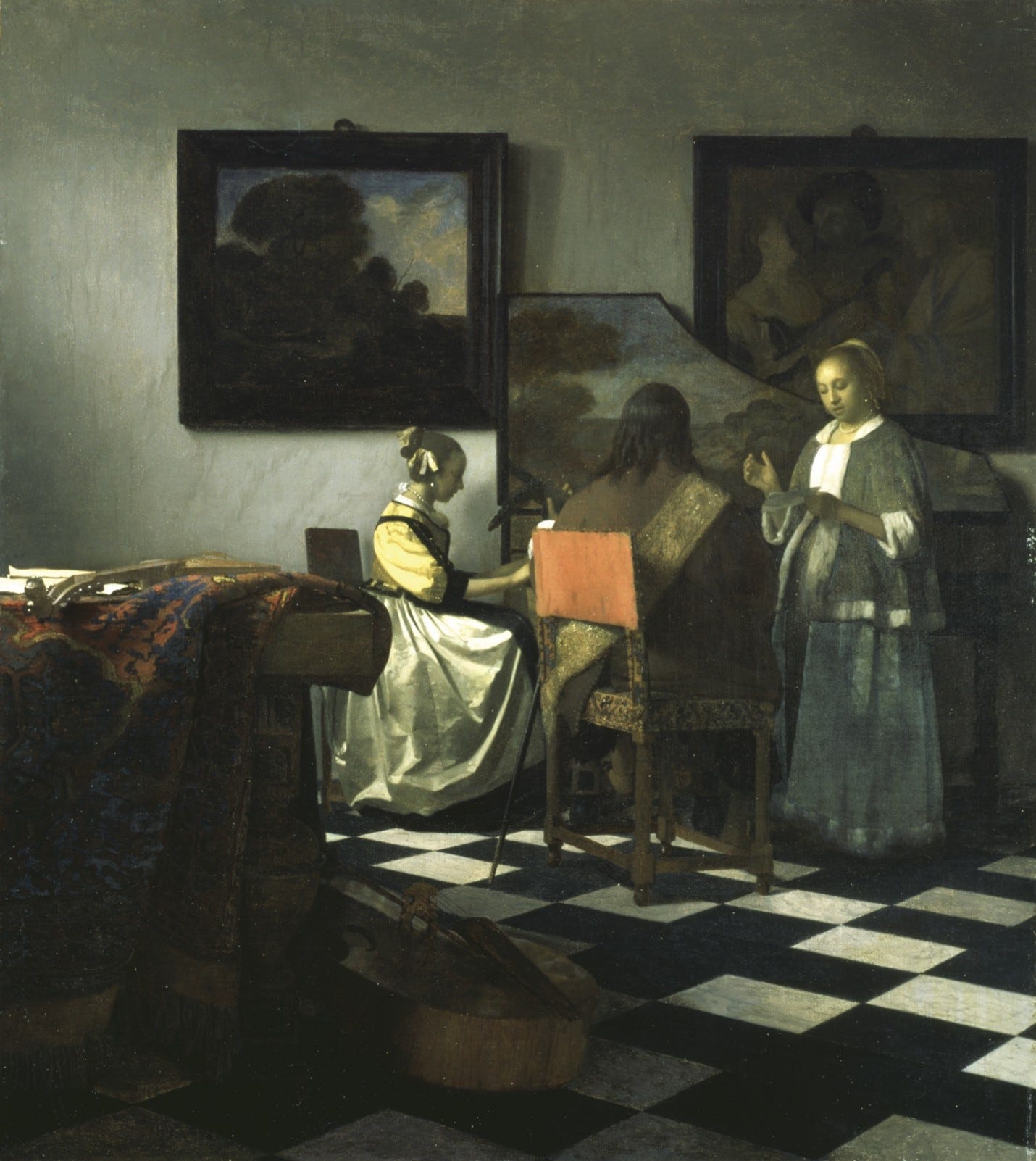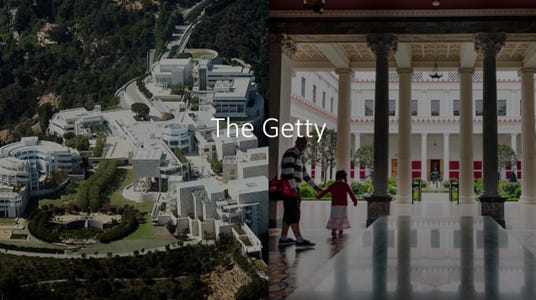FBF #17: Museums and My Dad
Five reflections on the enduring power of spending time in museums with the ones we love most
One of my go-to lines when discussing my family with strangers is that my dad really threw himself into his work…as a divorce lawyer. Indeed, my dad spent his entire professional life practicing family law at one of Boston’s premier law firms. He represented one spouse or the other in so many of the most high-profile New England divorces that I have lost count of the number of people who have told me, “Your dad did my parent’s divorce.”
The Power of a Good Divorce
But practice makes perfect, and one of the things my dad was best at was getting divorced himself. I say this only half facetiously because I think he truly did internalize the trauma that an ugly divorce can have on children. I often point to his split with my mother (wife 2 of 4) as a case study on the resuscitative powers of a good divorce.
I have never heard either of my parents speak ill of the other. If anything, a platonic version of whatever love first brought them together managed to survive their separation. Their split allowed me to gain new “parents,” and my relationship with my stepfather is one of the most precious in my life. Granted, I was only 4 when my parents divorced, so I am sure I am looking back on things with rose-tinted hindsight, and my sister, who was 13 at the time, no doubt has different memories of this period.
I recently read a quote that really resonated with me: “20 years from now, the only people who will remember that you worked late are your kids.”
So many of us, especially fathers, become so engrossed in our worldly pursuits that we miss out on the golden years with our children. One of the fringe benefits of the custody arrangement was that my Dad would spend Thursday nights and every other weekend with me. Setting aside these specific times created a structure that maximized the quality of our “dad and lad” time. This is a feature that fathers lucky enough to be in happy marriages could learn much from.
Throughout my childhood Thursday evenings were my favorite night of the week. My dad used to take me out to dinner after a woodworking class at Dedham High. Our conversations over Moo Shu Shrimp and Spaghetti Bolognese shaped me in the same way that he shaped the beds that he built during his woodworking class, one of which I still sleep on to this day.
Dad & Lad Time at the Museum
Going to museums with my dad is the other dominant memory of our time together, and museums will be the topic of this week’s newsletter.
Art has always been my dad’s drug of choice, and nary a weekend went by when he was not bringing me to the MFA, the Fogg, the Sackler, or, his personal favorite the Isabella Stewart Gardener. In 1990, the Gardener was famously robbed—as told in the amazing Last Seen podcast—and I distinctly remember visiting the museum both before and after the heist.
In fact, well before the robbery, my dad had commissioned a copy of Vermeer’s masterpiece (see below)—one of the paintings that was later stolen. During the investigation, the police questioned my father when they saw the Vermeer forgery through the window of his home.
While most kids dread visiting museums—and I’m sure I had my moments—to me they represented quality time with my dad. Much like listening to NPR on loop during long car rides, these early life experiences that we may have initially rebelled against eventually become the bedrock of our worldview that we pass on to our own children.
I am going to visit my dad this weekend, inshAllah. Sadly, however, he now spends his days at Vicarage-by-the-Sea, a wonderful memory care facility in Harpswell, Maine that we chose for him when his Alzheimer’s became too difficult to manage at home. Alzheimer's is such a cruel disease because it robs him of these memories that I hold so dear. But I plan to read him this edition of FBF and hope that it sparks his characteristic wit and maybe gives him a fleeting look at how much he has shaped the man I have become.
Every now and again, we still get a glimpse of the real Weld Henshaw (who you can learn about by reading this profile by my godfather John Spooner). Here is one of my favorite videos of my Dad “cutting the rug” as he dances to Crocodile Rock back in 2018.
With that heavy prologue out of the way, here are five ways to bring alive the magic of museums.
1) Take AP Art History
One of the best academic decisions I ever made was to take AP Art History during my senior year of high school. The course was taught in a dark, forgotten classroom by one of St. Mark’s most revered teachers, Barbara Putnam. When she finally retired last year, she got an unprecedented 3-minute “walking” ovation.
We pored over nearly every word of Gardner’s Art Through the Ages, and my dog-eared, heavily annotated copy sits right next to my desk at home. Mrs. Putnam was a magical storyteller who showed us how studying art—from the Venus of Willendorf to the Venus de Milo—was a way to deepen our understanding of what it means to be human. Artists from hundreds or even thousands of years ago are able to grab us on a visceral level and communicate with us across time.
Immediately after graduating, I embarked on an around-the-world gap year (see details in this “college essay”) during which I endeavored to see as much of the artwork we had studied as humanly possible.
Most Muslim parents dismiss subjects like art history (and gap years!) as frivolous wastes of time and urge that their children hew to the straight-and-narrow of “practical” courses in STEM fields. We need to broaden our view and recognize that even doctors and engineers need art in their lives.
Thanks to the magic of online learning, it is not too late for adults to explore art history themselves. Here is a Business Insider article about The Best Online Art History Courses From Harvard, MIT, and More.
2) Pay for a Tour Guide
Let’s face it: museums can be BORING. For a lot of us visiting a museum is like eating vegetables or exercising—we know it’s good for us, but that doesn't mean we are going to enjoy it.
But museums are only boring when we don’t know what we are seeing or why it matters. The best way to short circuit this challenge is by touring the museum with a guide who knows the museum well. The best tour guides are masterful storytellers who provide the juicy backstories that make art come alive. While group tours can be hit or miss, if the budget allows it, try to hire a private tour guide.
The other option is to take part in a curated audio tour, which are now usually delivered directly to your phone. While these audio tours don’t allow for Q & A, they still give you great insight into some of the jewels of the collections.
Another tip: be sure to ask the docents questions. Many of these workers LOVE talking about the art they are watching over, and it gives them a much-needed break from reprimanding kids for getting too close to the art.
3) Museum Hacks (for children and adults)
If museums are the equivalent of fiber for adults, they represent the inevitable outcome of consuming too much fiber for kids. To solve this problem, I recommend rebranding a family trip to a museum as a Museum Adventure.
There are lots of games you can play to keep kids engaged and interacting with the art. Most museums have scavenger hunts; you can play I-spy to pick out details from the paintings; or you can engage in a storytelling contest in which characters from two different works of art meet each other. I often have my children pick out their favorite (and least favorite) piece of art from a gallery.
Another tradition we have begun is having them build a collection of their own by purchasing a gift at the museum store—my son has been collecting snow globes since he was 4, and I have amassed an impressive array of magnets.
It is critical that we keep our own enthusiasm high, and Nick Gray has built an entire company called Museum Hack to help us do just that. Here are a few key pieces of advice that he has shared:
a) Pick up a map and then walk through the entire museum WITHOUT STOPPING when you first arrive.
b) Now that you have a mental model of the museum, head over to the café to build a plan of attack while sipping a latte.
c) Try not to make your total visit exceed 90 minutes, and don’t force yourself (or your family) to see everything. Adopt an abundance mindset and know that you can always come back.
d) Ask questions, take notes, or draw in a sketchpad if this keeps you more engaged.
e) Leave on a high note just when it’s getting good, so you have something to look forward to next time.
4) Date Night at the Museum
Whether you are seeking to spark a new romantic connection or are trying to rekindle the flames of an existing one, there is no better place than a museum. I think one of the best activities that a potential Muslim couple could do on their first “fig” (this is my brother’s term for a halal, supervised date) is to visit a museum.
One of the most popular first dates at Harvard is to go to the Hall of Glass Flowers at the Museum of Natural History. If she is rolling her eyes or he can’t stop yawning, there’s a decent chance that the relationship is not worth pursuing.
Married couples need to remember to keep dating their spouses, too. A picnic in the garden of a museum or a nice dinner in the museum café after visiting the galleries is a great way to take a break from the rigors of parenting and bask in the glow of each other’s company.
5) Off-the-Beaten-Path Museums that I Love
There are certain famous gigantic museums that ABSOLUTELY EVERYONE should visit at least once in their lives. These include:
the Met in New York
the Smithsonian in DC
the Louvre in Paris
the British Museum & National Gallery in London
the Prado in Madrid (the only one I have not yet been to)
But I wanted to focus on five smaller museums that underpromised and overdelivered, many of which I visited with my dad.
a) The Isabella Stewart Gardener in Boston—I spent countless hours at this sanctuary where art and architecture intertwine in a breathtaking symphony. The central courtyard, an oasis bathed in gentle sunlight, lends serenity to the remarkable galleries that surround it.
b) Sir John Soane’s Museum in London—This gem in the heart of England’s bustling capital lies hidden behind an unassuming façade. Each room is meticulously curated by the visionary Sir John Soane, and the labyrinthine corridors of the museum are truly enchanting.
c) The Scuola di San Giorgio degli Schiavone in Venice—Nestled in a rarely visited residential area of Venice, this confraternity includes a remarkable series of 9 paintings done by Carpaccio called the Cycle of St. George. You can see our 2022 visit at 10:14 of my daughter’s YouTube vlog of our Venice trip.
d) The Palazzo Pitti in Florence—Sometimes overshadowed by the Uffizi, prepare for sensory overload as you visit Palazzo Pitti, an opulent palace adorned with works by renowned masters such as Raphael, Titian, Caravaggio, and Rubens. The Medicis’ collected so much art that the walls are overflowing with paintings stacked on top of one another.
e) The Getty in Los Angeles—This is one that I have not yet visited. I put it here because my dad’s highest aspiration for me was to one day be the curator of the Getty. Children spend their whole lives trying to live up to their parents’ expectations. So, while I don’t know if this job is in the cards for me, I certainly hope that my dad knows that all our time spent at museums was not in vain.
I love you, dad.














I think it’s so beautiful how your relationship w your dad was solidified through art bc in many ways it’s one of the things that brought us together too. Even though Muslim civilizations of the past were incredible artisans, sadly it seems like Muslims today don’t carry this appreciation on. I would shout it from the rooftops of every mosque. The love and appreciation for art is compulsory in my book, or at least exposure to it. Thank you for reminding us of its power and how not to forget it in raising our children.
Your writing of your father is loving and kind, as is your tribute to your mother and your stepfather. They are fortunate to have your love and kindness in their lives.